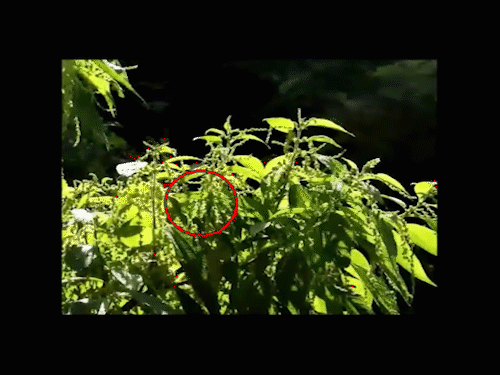Like capturing a sneeze, researchers including a University of Guelph scientist have recorded the only known example of prehistoric pollen caught in explosive mid-discharge from a fossil flower.
The team describes this “freeze-frame” fossilized pollen release – preserved in amber more than 20 million years ago — in a paper describing a new genus of fossil nettle plants.

The paper is co-authored by Peter Kevan, emeritus professor in the School of Environmental Sciences. It appears in the journal Botany alongside another paper by a second team that also includes the U of G researcher.
That second paper looks at a modern-day plant relative in Latin America that is surprising researchers with its use of explosive pollen release, a fair-weather dispersal method seemingly ill-suited to its home in humid tropical rainforests.
In their fossil paper, Kevan and his co-authors describe a new genus (Ekrixanthera, meaning “explosive anther”) containing two new species of extinct plants related to modern-day nettles.
These fossil plants were preserved during the mid-Tertiary period, said Kevan. By then, dinosaurs were long-extinct and non-human mammals roamed the Earth.
The samples came from the Dominican Republic and Mexico.
One Mexican sample has preserved pollen grains caught in mid-discharge from the male plant’s anther.
This pollen burst normally takes less than one-tenth of a second, said Kevan. “It’s remarkable that it was captured. It’s like catching a sneeze.”
He was asked to help identify the plants by lead author George Poinar Jr., an expert on amber fossils at Oregon State University.
“We ended up with the new genus because the flowers do not match those of any modern species,” said Kevan. “This tells us something about how old that group of plants is, and that this pollination mechanism goes back a long way.”
That form of pollen dispersal is also described in the second paper about modern-day tropical nettles. Boehmeria caudata grows from southern North America to northern Argentina.
Explosive pollen release is “something you don’t expect in the rainforest. Pollen blasted into the air is likely to get rained out.”
Most tropical plants rely instead on such creatures as insects, bats and birds rather than wind pollination, said Kevan.
In this group of nettles, the male plant disperses its pollen during short dry periods. Even during the rainy season, short sunny periods of high heat and low humidity trigger pollen release.
Drying causes parts of its stamens to shrink unevenly. Physical tension ruptures the anther to release an explosive burst of pollen.
That quick-release mechanism propels pollen into air currents and allows the male flowers to react to short-term weather conditions.
Kevan’s co-authors are students at the University of Sao Paulo led by Paula Maria Montoya-Pfeiffer. They studied Boehmeria during a pollination course taught in Brazil by Kevan in late 2014.
He and colleagues have taught that course in several Latin American countries for decades.